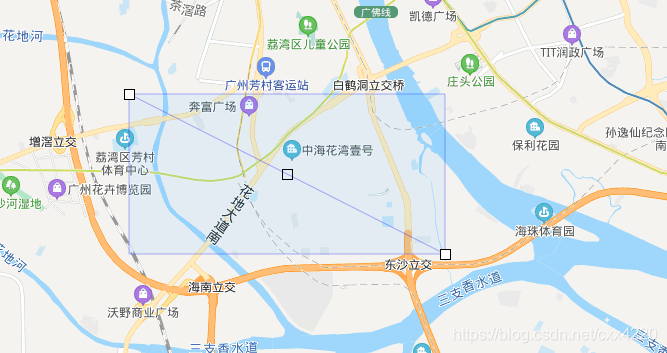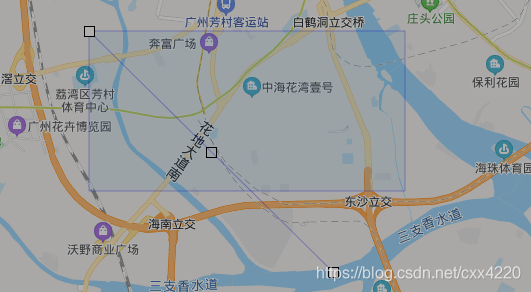百度地图里面,只有折线、多边形和圆形, 那么怎么去绘制矩形,并且实现矩形可以整体拖动呢?
首先,我们知道,矩形四个点的规律,分别是
左下角:{lng:this.mapCenter.lng - 0.01,lat:this.mapCenter.lat -0.01},
左上角:{lng:this.mapCenter.lng - 0.01,lat:this.mapCenter.lat + 0.01},
右上角:{lng:this.mapCenter.lng + 0.01,lat:this.mapCenter.lat + 0.01},
右下角:{lng:this.mapCenter.lng + 0.01,lat:this.mapCenter.lat - 0.01}
因此,可以通过这种方式去初始化一个正方形,如果你要自己去绘制的话,可以借助drawManage
编辑原理:
绘制出来的矩形如果随意编辑,就会变成多边形,因此,我们限制初始化的矩形不可编辑,给矩形添加一条对角线,通过编辑对角线,拖动对角线,让矩形根据对角线的变化来变化,实现举行的编辑,效果如图:


 绘制百度地图上的可拖动矩形:实现编辑策略
绘制百度地图上的可拖动矩形:实现编辑策略





 本文介绍了如何在百度地图中使用BaiduMap和Vue-Baidu-Map组件绘制可整体拖动的矩形,通过初始化对角线并限制编辑,实现在地图上自由调整矩形。关键代码展示了如何控制矩形四点和对角线的交互以保持形状不变。
本文介绍了如何在百度地图中使用BaiduMap和Vue-Baidu-Map组件绘制可整体拖动的矩形,通过初始化对角线并限制编辑,实现在地图上自由调整矩形。关键代码展示了如何控制矩形四点和对角线的交互以保持形状不变。
 最低0.47元/天 解锁文章
最低0.47元/天 解锁文章

















 2644
2644

 被折叠的 条评论
为什么被折叠?
被折叠的 条评论
为什么被折叠?








